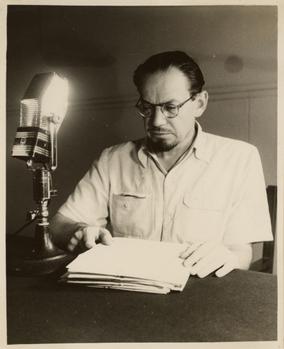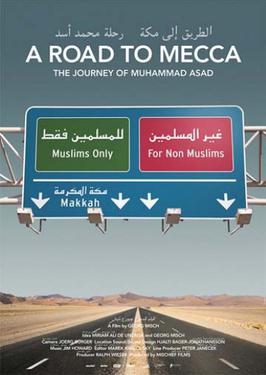Chughtai or Chagatai is a family name that originated in the Chagatai Khanate as taken up by the descendants and successors of Chagatai Khan who was the second son of Mongol Emperor Genghis Khan. Accordingly, some of the other descendants of the successors of Chagatai Khan in South and Central Asia use variants such as Mirza, Baig and Khan.

Mount Arafat is a granodiorite hill about 20 km (12 mi) southeast of Mecca, in the province of the same name in Saudi Arabia. It is approximately 70 m (230 ft) in height, with its highest point sitting at an elevation of 454 metres (1,490 ft).

The Banu Qurayza were a Jewish tribe which lived in northern Arabia, at the oasis of Yathrib. They were one of the three major Jewish tribes of the city, along with the Banu Qaynuqa and Banu Nadir.
Fatima bint Asad was the wife of Abu Talib and the mother of their son Ali ibn Abi Talib.
Ahmadpur East or Ahmadpur Sharqia is one of the five tehsils, or administrative subdivisions, of Bahawalpur District.

Muhammad Asad was an Austro-Hungarian Muslim polymath, born in modern day Ukraine. He worked as a journalist, traveler, writer, political theorist, and diplomat.
The Farewell Pilgrimage refers to the one Hajj pilgrimage that Muhammad performed in the Islamic year 10 AH, following the Conquest of Mecca. Muslims believe that verse 22:27 of the Quran brought about the intent to perform Hajj in Muhammad that year. When Muhammad announced this intent, approximately 100,000 of his Sahaba gathered in Medina to perform the annual pilgrimage with him. Muhammad performed Hajj al-Qiran, a type of Hajj in which Umrah and Hajj are performed together. On the 9th of Dhu al-Hijjah, the Day of Arafah, Muhammad delivered the Farewell Sermon atop the Mount Arafat outside Mecca.

Talal Asad is a Saudi-born British-Pakistani cultural anthropologist who is currently Distinguished Professor Emeritus of Anthropology and Middle Eastern Studies at the Graduate Center of the City University of New York. His prolific body of work mainly focuses on religiosity, Middle Eastern studies, postcolonialism, and notions of power, law and discipline. He is also known for his writing calling for an anthropology of secularism.

Abdur Rahman Chughtai was a painter, artist, and intellectual from Pakistan, who created his own unique, distinctive painting style influenced by Mughal art, miniature painting, Art Nouveau and Islamic art traditions. He is considered to be 'the first significant modern Muslim artist from Pakistan', and the national artist of Pakistan.

The Day of Arafah is an Islamic holiday that falls on the ninth day of Dhu al-Hijjah of the lunar Islamic Calendar. It is the second day of the Hajj pilgrimage and is followed by the holiday of Eid al-Adha. At dawn of this day, Muslim pilgrims will make their way from Mina to a nearby hillside and plain called Mount Arafat and the Plain of Arafat. It was from this site that the Islamic prophet Muhammad gave one of his last sermons in the final year of his life. Some Muslims hold that part of the Quranic verse announcing that the religion of Islam had been perfected was revealed on this day.

Chaudhry Niaz Ali Khan was a civil engineer, agriculturalist, and philanthropist who founded "Dar ul Islam Movement" and "Dar ul Islam Trust" in South Asia and "Dar ul Islam Trust" Institutes in Pathankot and Jauharabad. Besides a philanthropist, Niaz was also a civil servant, and a landowner. He was the member of All-India Muslim League and a participant of the Pakistan Movement with the ultimate aim of creating the Muslim-majority areas of British India.
Shehzori is a Pakistani Urdu-language television series that aired in 1974. It was the debut serial of the playwright and scriptwriter Haseena Moin, who went on to become the most famous and successful drama writer of Pakistan, and to this day no writer has matched the popularity that she achieved. Shehzori is based on a work of the same name by Mirza Azeem Baig Chughtai. It was directed by Mohsin Ali.
Pakistan Medical and Dental Council is a statutory regulatory authority that maintains the official register of medical practitioners in Pakistan. Its chief function is to establish uniform minimum standards of basic and higher qualifications in medicine and dentistry throughout Pakistan. It also sets the education standards for medical colleges in Pakistan along with the Higher Education Commission.

A Road to Mecca – The Journey of Muhammad Asad, also known as A Road to Mecca, is a 2008 documentary by Austrian filmmaker Georg Misch. The documentary traces the path of Muslim scholar and political theorist Muhammad Asad, which led to his conversion to Islam.
Banu Asad is an Arab tribe, descended from Asad ibn Khuzayma. They are Adnanite Arabs, powerful and one of the most famous and influential tribes. They are widely respected by many Arab tribes, respected by Shia Muslims because they have buried the body of Husayn ibn Ali, his family and companions with the help of Ali ibn Husayn Zayn al-Abidin, the son of Husayn, and many martyrs from the Battle of Karbala are from the tribe. Today, many members of the tribe live in the Iraqi cities of Basra, Najaf, Kufa, Karbala, Nasiriyah, Amarah, Kut, Hillah, Diyala and Baghdad. There is a branch from the Banu Assad in Northern Sudan called Banu Kahil who have migrated from the Hijaz to Sudan. There are also members of Bani Assad tribe in Ahvaz in the Khuzestan of Iran located with neighboring tribes of Banu Tamim, Bani Malik, Banu Kaab and other notable Arab tribes.

Sheikh Muhammad Ikram better known as S. M. Ikram, was a Pakistani historian, biographer, and littérateur. He was member of the Indian Civil Service. In 1947, when Pakistan emerged from British India, Ikram opted for Pakistan and served in the Civil Service of Pakistan. On July 1, 1966, he was appointed as director, Institute of Islamic Culture, Lahore, a position he occupied until his death in 1973, at the age of sixty-four.
Ikram Kabbaj is a Moroccan sculptor. Kabbaj primarily sculpts stone and marble.

Muhammad Ikram Chughtai, also written as M. Ikram Chughtai or Ikram Chagatai, was a Pakistani researcher, translator, historian, and biographer. He conducted research on Muhammad Husain Azad and Muhammad Asad and published several rare and previously unpublished documents, contributing to Urdu research. His work in Iqbal Studies is frequently referenced in academic literature. His research methodologies and findings have been cited in Urdu, English, and other languages.








